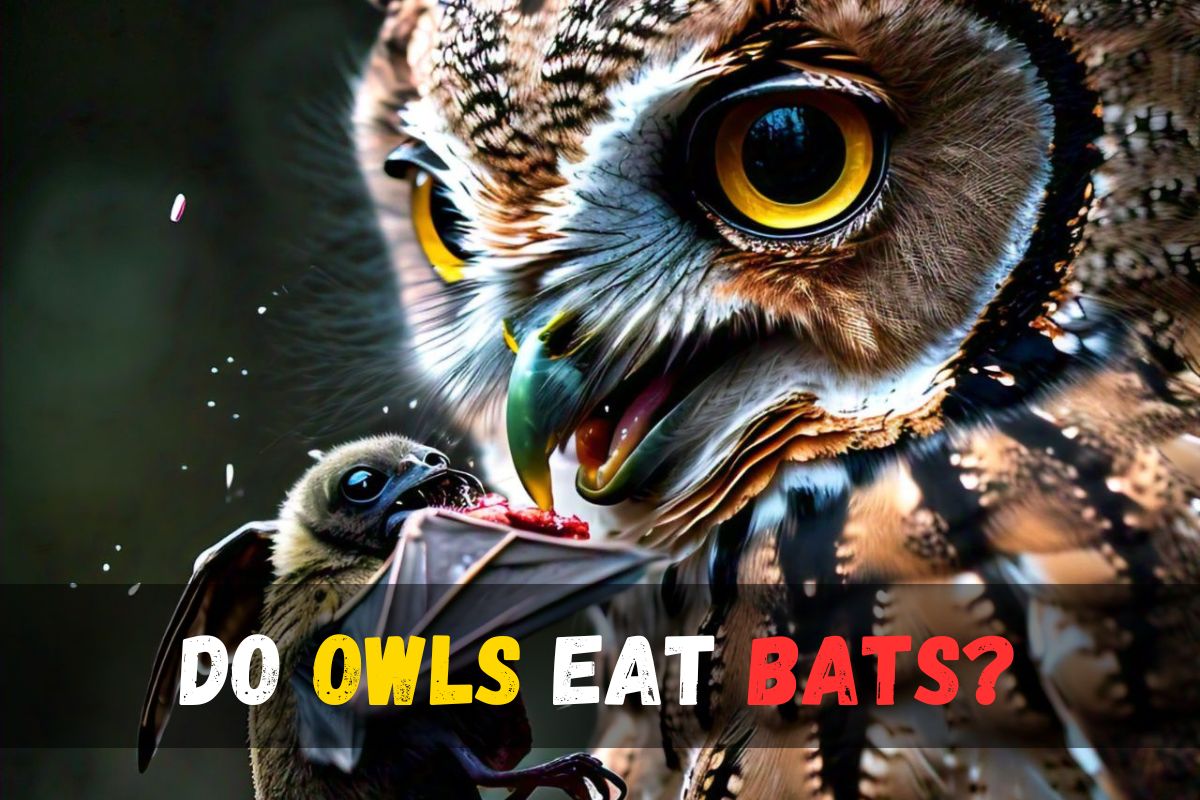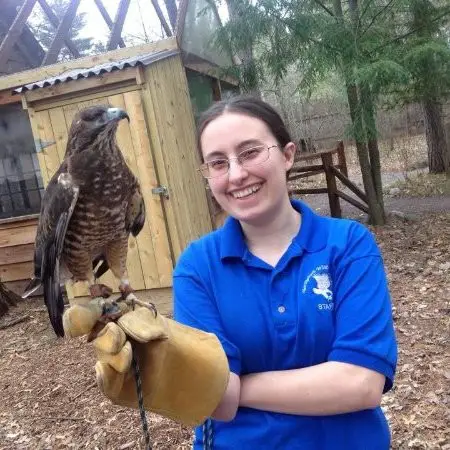Do owls eat bats?
Owls eat bats, making them one of the few predators capable of preying on these agile mammals. Owls, particularly larger species like the Barn Owl, Great Horned Owl, and Tawny Owl, have been observed hunting bats as part of their diet. The hunting process typically occurs at night when both owls and bats are active, and owls utilize their exceptional night vision, acute hearing, and silent flight to ambush bats in mid-air or as they leave their roosts. Bats provide a nutritious meal rich in protein, supporting these nocturnal raptors’ energy demands. This predation, while not the most common behavior, illustrates owls’ adaptability and hunting prowess in diverse environments.
Do Owls Eat Snakes?
Nutritional Benefits of Eating Bats for Owls
Owls, as apex predators, have a diverse diet that includes a variety of prey, with bats being one of their nutritional sources. Understanding the nutritional benefits owls gain from eating bats provides insight into their dietary habits and overall health.
High Protein Content
Bats are rich in protein, a critical component of an owl’s diet. Protein is essential for the growth, repair, and maintenance of an owl’s tissues, particularly during breeding seasons when the energy demand is higher. The high protein content in bats supports muscle development and helps maintain the owl’s powerful talons and beak, crucial tools for hunting.
Fat Reserves and Energy
Bats contain a significant amount of fat, providing owls with a dense source of energy. This energy is vital for maintaining their nocturnal lifestyle, supporting long flights, and sustaining them during periods when prey might be scarce. The fat content also plays a role in insulating the owl’s body, helping them to thrive in varying temperatures.
Essential Vitamins and Minerals
Bats are also a source of essential vitamins and minerals that contribute to an owl’s overall health. Vitamins like A and E, found in bat tissues, are crucial for maintaining sharp vision, especially during night hunting. Additionally, minerals such as calcium and phosphorus are vital for bone strength, ensuring that owls have the physical resilience required for their predatory lifestyle.
Do Owls Eat Squirrels?
Balance of Amino Acids
The consumption of bats provides owls with a balanced profile of amino acids, the building blocks of protein. These amino acids are necessary for the synthesis of enzymes and hormones, which regulate vital functions such as metabolism and reproduction in owls. A diet including bats helps maintain this balance, supporting the owl’s physiological functions.
Hydration Through Prey
Interestingly, owls obtain much of their required hydration from the prey they consume, including bats. The moisture content in bats helps owls meet their water needs, which is particularly beneficial during dry seasons or in arid habitats where water sources are scarce.
Do Owls Have Teeth?
Which owls eat bats?
Barn Owl (Tyto alba)
The Barn Owl, distinguished by its heart-shaped face and silent flight, is a widespread species known for its effective hunting abilities. This medium-sized owl preys on a variety of small mammals, birds, and insects, with bats being an occasional but significant part of its diet. Its specialized hearing allows it to detect prey in total darkness, making it highly efficient at catching flying bats during nocturnal hunts. The Barn Owl’s distinctive white or pale undersides and mottled brown upperparts provide excellent camouflage in its preferred habitats, which include open fields and barn lofts. Its ability to hunt both in flight and from perches highlights its adaptability to different environments and prey types.
How to Get Rid of Owls
Great Horned Owl (Bubo virginianus)
The Great Horned Owl is a formidable predator known for its large size, powerful talons, and tufted “horns.” This versatile bird has a varied diet that includes mammals, birds, and insects, with bats occasionally forming part of its prey. It is capable of capturing and consuming larger bats due to its robust physical build and hunting prowess. The Great Horned Owl uses a combination of keen vision and silent flight to stalk and capture prey. Its large, round face and intense yellow eyes enhance its ability to locate bats in low light conditions, making it an effective hunter in diverse habitats ranging from forests to urban areas.
Eastern Screech Owl (Megascops asio)
The Eastern Screech Owl is a small, adaptable owl with distinctive ear tufts and a varied diet. Although it primarily feeds on insects and small rodents, it will also consume bats when they are available. This owl’s hunting strategy involves perching quietly and waiting for prey to come within striking distance. Its excellent camouflage, with plumage that blends with tree bark, helps it remain hidden from both prey and predators. The Eastern Screech Owl’s ability to adapt to different environments, including suburban areas, and its diverse diet make it a key player in controlling the populations of various small animals, including bats.
Spotted Owl (Strix occidentalis)
The Spotted Owl, with its distinctive dark eyes and spotted plumage, is known for its preference for old-growth forests. This medium-sized owl primarily feeds on small mammals and birds, but it will also prey on bats, especially in areas where other prey is less abundant. The Spotted Owl’s hunting technique involves a combination of stealth and quick, precise strikes from a perch. Its excellent night vision and quiet flight enable it to locate and capture bats in dense forest environments effectively. As an indicator species for the health of old-growth forests, the Spotted Owl’s diet reflects its role in maintaining ecological balance within its habitat.
Bat Species Targeted by Owls
Little Brown Bat (Myotis lucifugus)
The Little Brown Bat is a common prey item for several owl species. Its small size and nocturnal habits make it vulnerable to owl predation. Barn Owls and Great Horned Owls are known to target this bat species.
Big Brown Bat (Eptesicus fuscus)
The Big Brown Bat, although larger than the Little Brown Bat, is still within the size range that many owls can capture. Great Horned Owls are particularly known for preying on this species due to their size and strength.
Pallid Bat (Antrozous pallidus)
The Pallid Bat, found in various parts of North America, is another bat species that owls prey on. Its relatively large size compared to other bats makes it a suitable target for larger owl species.
Mexican Free-Tailed Bat (Tadarida brasiliensis)
The Mexican Free-Tailed Bat, known for its fast flying and migratory behavior, is occasionally preyed upon by owls. Its size and agility can pose a challenge, but certain owl species are capable of catching these bats.
Why Do Owls Eat Bats?
Owls eat bats primarily due to their nutritional value and the hunting advantages they offer. Bats are a rich source of protein, which is essential for maintaining the high energy levels required by owls, especially larger species. Additionally, bats are nocturnal, aligning their activity patterns with those of many owl species, which also hunt during the night. This synchronicity allows owls to capitalize on the abundance of bats in their environment. The varied diet of owls contributes to their adaptability and survival, enabling them to thrive in diverse habitats where bats are present.
Where Do Owls Find Bats?
Owls typically find bats in environments where these mammals roost and forage. Common locations include caves, abandoned buildings, and dense foliage, where bats seek shelter during the day. Owls may also encounter bats in urban areas where bats roost in attics or under bridges. The hunting grounds for owls often overlap with the roosting sites of bats, such as forests, woodlands, and open areas near water sources. This overlap increases the likelihood of encounters, as owls are adept at locating bats using their acute hearing and silent flight, especially during dusk or dawn when both creatures are active.
Health Risks to Owls from Eating Bats
Parasitic Infections:
Bats are hosts to a range of parasites, including ectoparasites like ticks and mites, as well as endoparasites such as intestinal worms. When owls prey on bats, they can ingest these parasites along with their prey. The parasites can then infest the owl’s digestive system or external surfaces, leading to health complications. Infections from these parasites can cause symptoms ranging from mild irritation to severe health issues such as anemia or organ damage. For instance, bat ticks can transfer pathogens that affect the owl’s blood and immune system, compromising its overall health and increasing susceptibility to other diseases.
Disease Transmission:
Bats are known reservoirs for several zoonotic diseases, which can be transmitted to other animals through consumption. Notably, diseases such as rabies and histoplasmosis are associated with bats. Rabies, a viral infection that affects the nervous system, can be fatal if contracted. Histoplasmosis, a fungal infection, can cause respiratory problems and systemic illness. When owls consume infected bats, they risk contracting these diseases, which can compromise their health and potentially lead to severe consequences. The presence of these diseases in the owl population can also have ripple effects on ecosystem health and wildlife disease dynamics.
Nutritional Imbalance:
Bats offer a unique nutritional profile, differing significantly from other prey items that owls typically consume. They have a high proportion of fat and low levels of certain essential nutrients compared to mammals or birds. Regularly consuming bats may lead to nutritional imbalances in owls, such as deficiencies in vitamins and minerals that are crucial for their health. This imbalance can affect the owl’s immune system, reproductive success, and overall vitality. For example, inadequate levels of essential nutrients might impair feather development or lead to weakened bone density, impacting the owl’s ability to hunt and survive in the wild.
Impact on the Ecosystem of Owls Eating Bats
Controlling Bat Populations
When owls eat bats, they help keep bat populations in check. Bats play an important role in ecosystems by controlling insect populations, pollinating plants, and spreading seeds. However, if there are too many bats, it can lead to problems like overconsumption of insects and competition for resources. Owls help prevent these issues by naturally limiting the number of bats, ensuring that the ecosystem stays balanced.
Supporting Biodiversity
Owls preying on bats also support biodiversity, which is the variety of life in an ecosystem. By keeping bat numbers at a healthy level, owls make sure that there’s enough food and space for other animals to thrive. This helps maintain a diverse range of species, which is important for a resilient and healthy ecosystem.
Maintaining Ecosystem Balance
The relationship between owls and bats helps maintain the overall balance of the ecosystem. When owls control bat populations, they prevent any one species from becoming too dominant. This balance allows various plants and animals to coexist and supports the smooth functioning of natural processes like pollination and seed dispersal.
Protecting Ecological Services
Bats provide essential ecological services like pollinating plants and controlling insects. However, too many bats could disrupt these services. By keeping bat populations in check, owls ensure that these ecological services continue without causing harm to the environment. This balance benefits both the ecosystem and human activities, like agriculture, that rely on these natural processes.


